Outstanding Orchids: Longwood Gardens in Pennsylvania Is a Plant Lover’s Dream
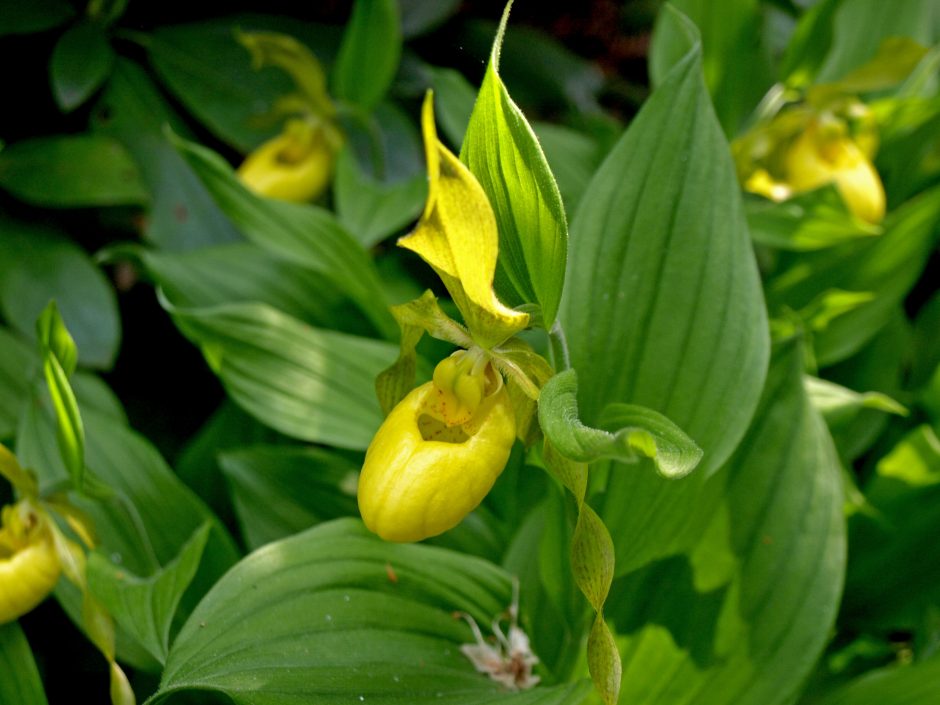 The greater yellow lady’s slipper (Cypripedium parviflorum var. pubescens) has become very rare in southeastern Pennsylvania and is one of the orchids Longwood is working to conserve. (Credit: Longwood Gardens)
The greater yellow lady’s slipper (Cypripedium parviflorum var. pubescens) has become very rare in southeastern Pennsylvania and is one of the orchids Longwood is working to conserve. (Credit: Longwood Gardens)Dr. Matt Taylor, Director of Research and Conservation at Longwood Gardens in Kennett Square, Pennsylvania, recalls the first time he saw the facility. “I came to Longwood for the first time to interview for my job here. I was already nervous, but the gardens here are so magnificent, so large and so impressive, I became even more nervous!” he laughs. Ten years later, he is still at Longwood, and couldn’t be happier. “It’s a great place for horticulturists. It’s like the ‘Disney World of Plants’ here,” he says.
Longwood Gardens stretches over 1,077 acres, about 600 acres of which is either natural habitat or conserved farmland.
Many conservation and restoration efforts are in full swing at Longwood. One of the big conservation efforts is the restoration of native orchid populations. Taylor works with other horticulturalists, a principal one being Dr. Peter Zale, to restore orchids of the Mid-Atlantic region. “There are about nine species that we especially focus on. We collect them from the wild and propagate them at Longwood,” he mentions. Some orchid species collected for Longwood include Goodyera tesselata and Spiranthes spp.
Conservation and restoration at Longwood also include more than plants. Herptiles, including turtles, are also monitored at Longwood. These are monitored using coverboard surveys. Basking traps in ponds are also utilized.
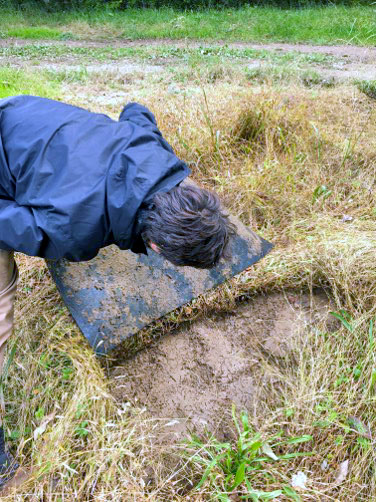
Calvin Cooper examines a coverboard to determine species present and abundance of terrestrial and amphibious herpetofauna in Natural Lands at Longwood Gardens. (Credit: Longwood Gardens)
Macroinvertebrate surveys have also been performed using D-shaped nets. Macroinvertebrate surveys at Longwood began in 2016, and some species of interest included: riffle beetles, flatworms, crayfish, stoneflies, midges and caddisflies. Protocols for sample collection and surveys come from the Pennsylvania Department of Environmental Protection. While standard surveys have been done, more in-depth microscopic surveys are planned for the future.
“We are hoping to get baseline information on every stream on the property for these surveys,” says Taylor. “This will take some time. We are up to three so far.” Longwood has over 20,000 feet of streams and sits atop 3 different watersheds.
Freshwater mussel populations were also introduced into Longwood in an attempt to help them recover after years of decline in the region. “They are doing well, so we know we must have good water quality. They are very sensitive to pollution in the water and need a very clean aquatic habitat to thrive,” Taylor explains.
“We are committed to land stewardship,” says Taylor. “We are interested in the impacts of our activity on biodiversity. We perform many types of monitoring to try to have the most positive impact on species we possibly can, including water quality monitoring.”
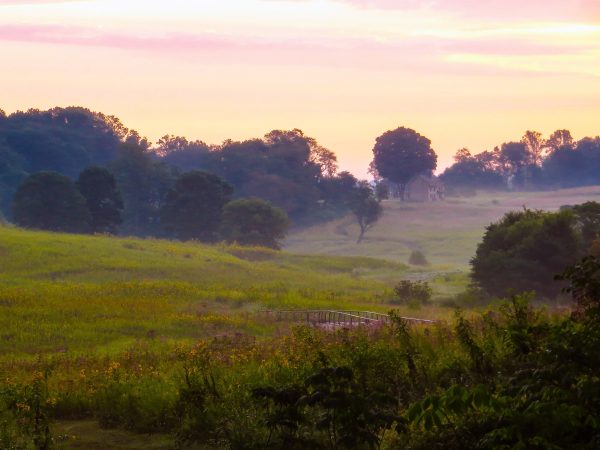
Longwood’s 86-acre Meadow Garden. (Credit: Longwood Gardens)
Water quality monitoring began about three years ago. Longwood uses the Stroud Water Research Center to perform some of the water quality data gathering and analysis. Chemical species analyzed in the lab include nitrates, phosphates, chlorides, potassium, calcium and magnesium.
“We try to minimize the fertilizer we use,” says Taylor. “We want to make sure we are fertilizing properly.”
Appropriate use of fertilizer is especially important at Longwood because the property is sitting on headwaters. “We try to stay at the groundwater level baseline,” Taylor explains. Use of fertilizer is based on soil analysis.
Longwood is heavily involved in sustainable farming practices. “We want to have robust soil. We have specific yield maps and we try to minimize fertilizer use. We also try to use no-till farming. We want the soil to be stabilized from a microbiological standpoint, and we want a high-quality soil with the best organic matter content in the soil we can achieve,” says Taylor.
“We do extensive soil tests across the property from field soils and garden bed to containerized plants. We conduct from 700-1000 tests per year. We do soil and growing media testing for pH and Electrical Conductivity in-house and we send out soil, growing media and plant tissue samples for elemental analysis. In-house tests are carried out with an accumet XL benchtop meter with individual pH and EC probes,” Taylor elaborates.
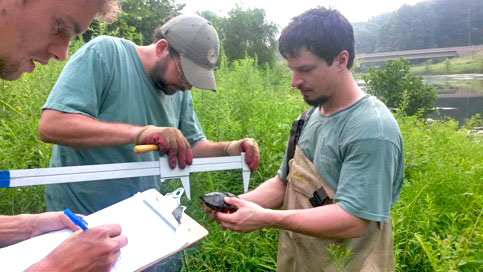
Cody Caporaso, Colin MaCallum-Cook and Calvin Cooper measure morphological traits and determine the age and sex of turtles as part of Longwood’s Aquatic Turtle Research Program. (Credit: Longwood Gardens)
In addition to the conservatory and gardens, Longwood also manages 181 acres of meadow in coordination with the Fish and Wildlife Association. The meadow contains Elliott’s Blue Stem, which many birds find attractive.
“We have very diverse plant life here, from old-growth forests to rare orchids from all over the world. Longwood is a very ecologically sensitive place,” says Taylor. “For us, it’s important to tie our restoration work with conservation and land management work.”
One of the projects at Longwood is optimizing the production of display crops used in the conservatory for sustainability. Five acres of greenhouse crops are subjected to a formula rating system. The idea is to find which crops are the most sustainable and use the space most efficiently. “In other words, which crops give us the best outputs for the least inputs? Which ones have the most desirable behavior, like being able to produce in January or February?” Taylor explains. “Our focus is quality. We are trying to get the best plants possible.”
Part of sustainability also involves incorporating renewable sources of energy. “Our solar field was installed in 2011,” Taylor recalls. “It now supplies 30 percent of our electricity.” The solar field covers ten acres and supplies 2.8 megawatts of power.
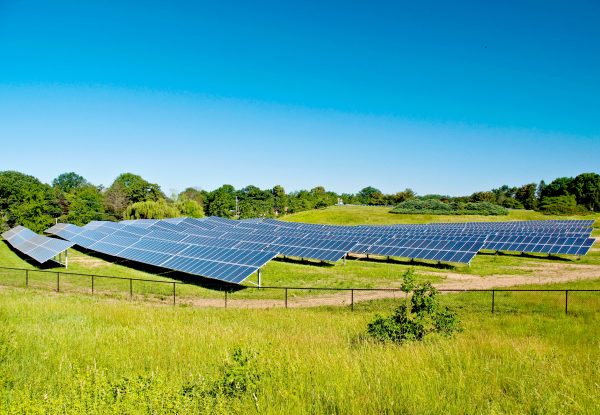
Longwood Gardens is also home to a 10-acre solar field, opened in 2011. (Credit: Longwood Gardens)
Helping to perform all the work that needs to be done at Longwood Gardens are undergraduates in Longwood’s robust student and intern programs. About 60 undergraduate students are doing horticulturally related work year round, with projects lasting three months to one year. There is also a two-year gardening program with an in-field practicum, an international internship program and a plant phenology program.
With its spacious gardens, old forest and meadow habitat, as well as its emphasis on sustainability, Longwood Gardens delight scores of visitors, approximately 1.5 million each year.
“There is amazing diversity here. Things are always changing, and it’s been exciting to watch our research and conservation plans come to fruition,” Taylor notes. “I’ve traveled all over the world for this job, conferring with other horticulturalists and learning the latest in the field, for which I am grateful. People here at Longwood love what they do. We’re an organization devoted to conservation and sustainability, and it shows. Come on out and visit us!”




0 comments